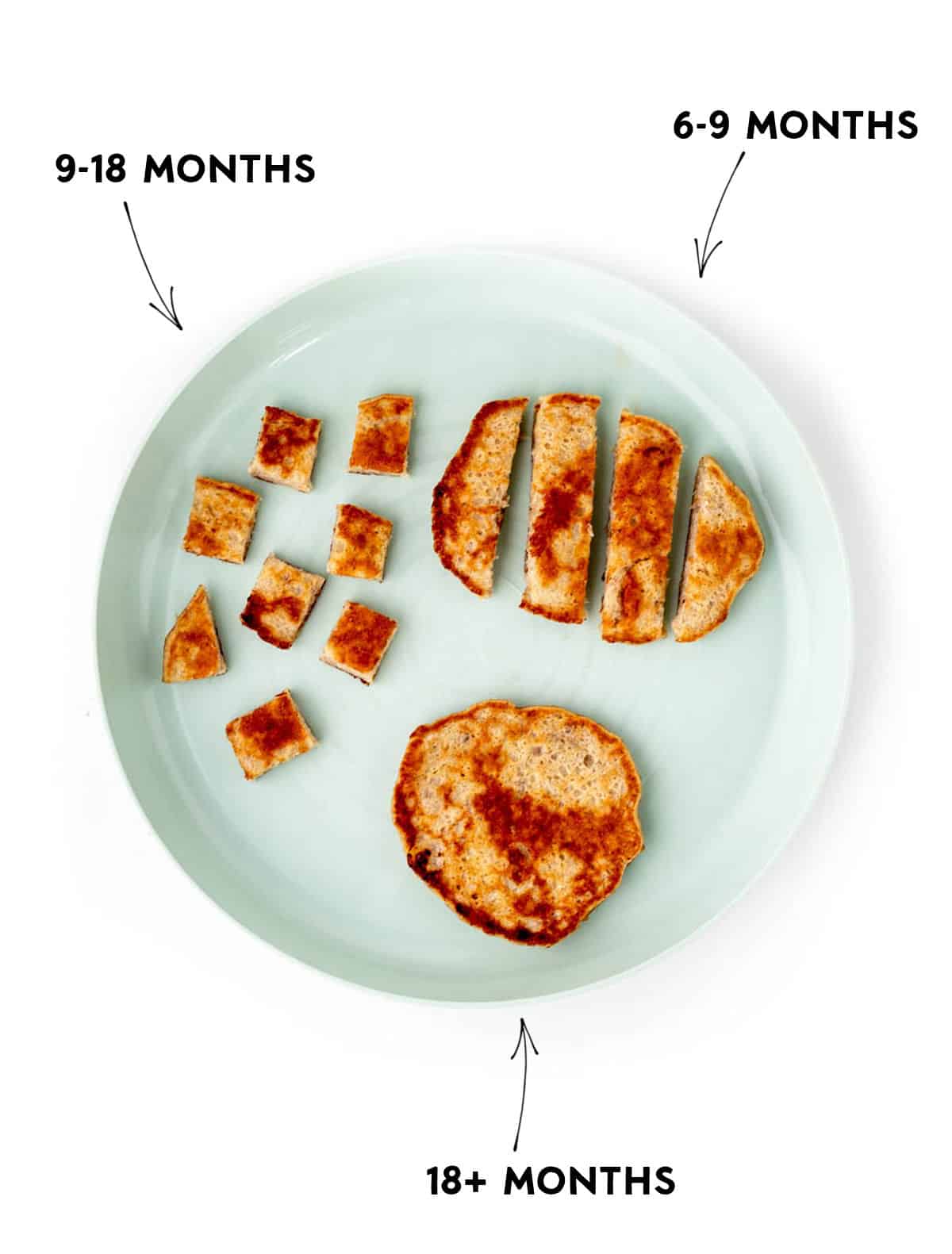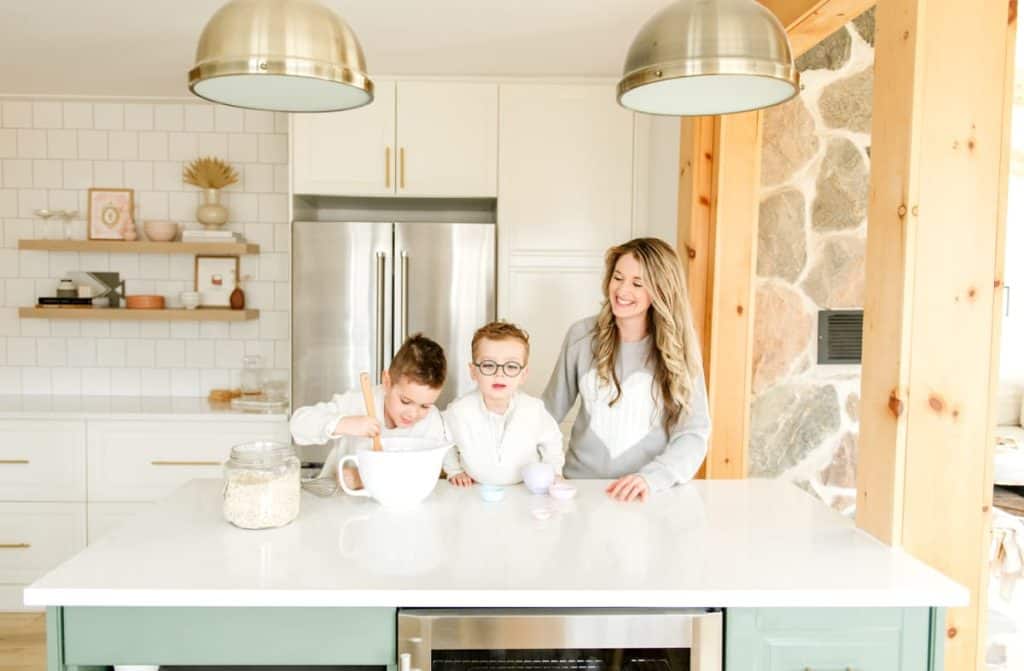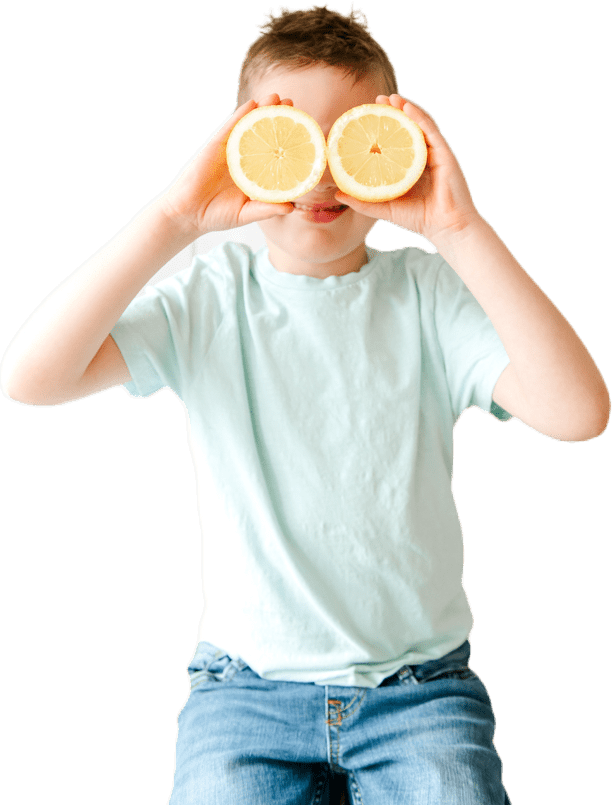As an Amazon Associate I earn from qualifying purchases. I get commissions for purchases made through links in this post.
Pancakes are the perfect food for babies just starting out on solids. Learn how to cut pancakes for babies depending on their age and stage of development!
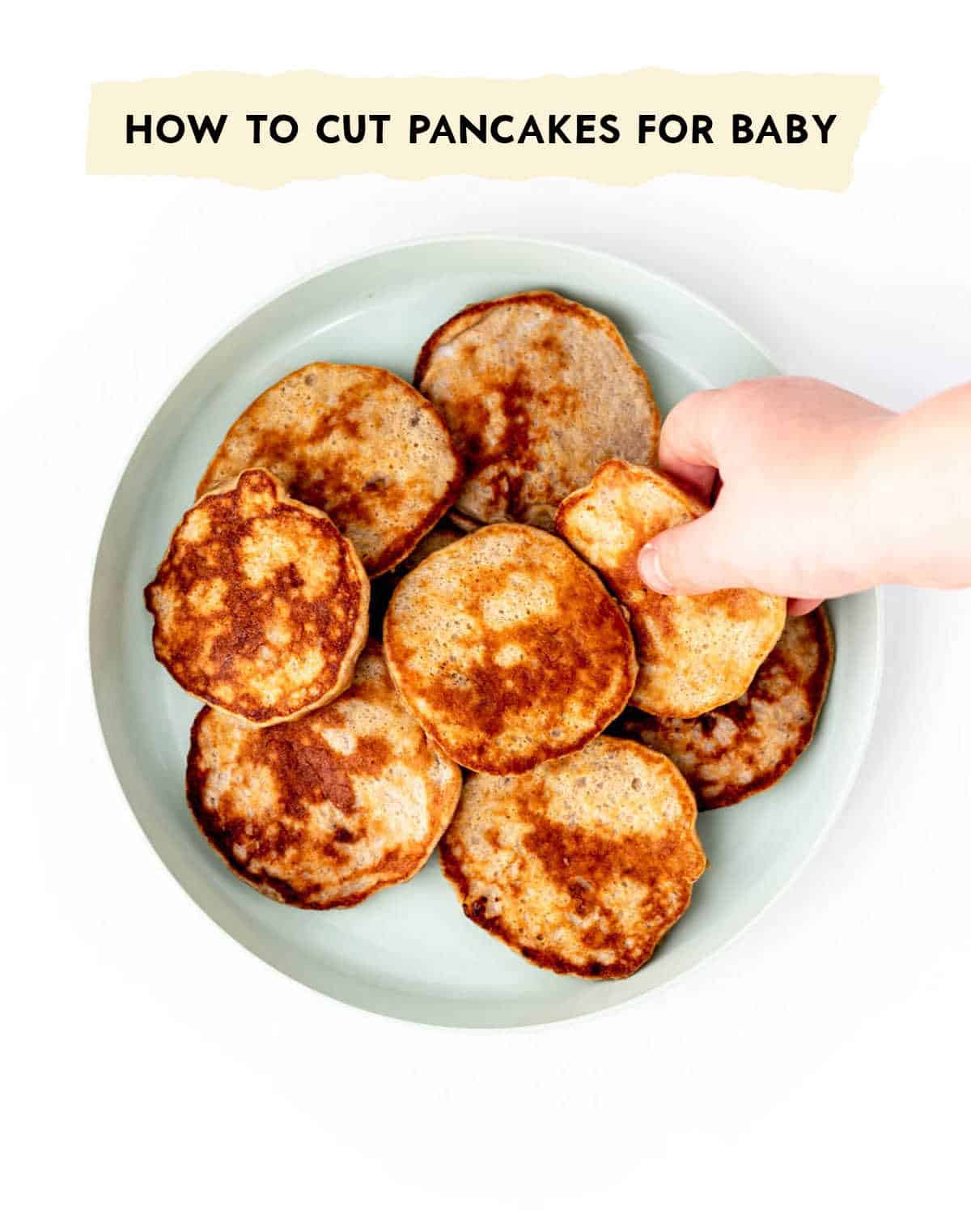
Pancakes for Babies
Pancakes are such great finger foods and make the perfect breakfast for babies, but of course, older kids can enjoy them too! They’re easy to hold, soft enough to chew even without teeth, taste delicious, and usually won’t result in a huge mess everywhere (#momwin).
The ones we love, these banana oat pancakes, are made with baby oatmeal fortified with iron, and are definitely a healthy first food your baby will love. As a bonus, they contain simple ingredients and no added sugar!
In order to follow baby-led weaning, you’ll need to cut the pancakes differently depending on the age of your baby and their motor development.
It’s important to cut their pancakes the right way to make sure they’re easy for babies to pick up, and also safe to eat. Babies have different fine motor skills at different ages, and smaller chunks can be a choking hazard for little eaters!
It’s best to follow the general guidelines below and to observe your baby’s movements, looking for changes in how they hold or grasp things over time.

How to Cut Pancakes for Baby
6-9 Month Old
When babies first starts eating solid foods, they’ll naturally know how to use a palmer grasp. This is the effect you’ve probably noticed when you press your finger into your baby’s palm.
They’ll naturally close their palm and thumb around your finger. When they start eating their first pancake, babies will grab it with their whole hand and then close their thumb around the item to pick it up.
Starting around six months of age, you’ll want to cut pancakes (and other foods) into approximately 1-inch wide strips (or about the size of your pinky finger). This will allow your baby to grab the whole item with their palm and have an easy time holding it to feed themselves.
It may be tempting to cut the pancakes into tiny bites, but these will be much harder for your baby to grab. Stick with the pancake strips until you notice them starting to pinch items between their fingers. Then, they’re ready for the next stage.

Since this is a new skill for babies, new parents often worry about younger babies choking. This is a normal concern, and, of course, we want to be cautious.
There’s a difference between choking and gagging, though. If your baby gags, their natural reflexes are helping to protect their airway. This is a good response!
I always recommend sitting beside your baby as they eat to make sure they’re safe. Try to avoid getting involved in the process unless your baby is actually choking – your baby needs to learn these skills on their own.
9-18 month old
When babies develops a pincer grasp, they’ll be able to pick items up by pinching their finger and thumb together. Because of this, older babies are able to handle more fine detail movements, like picking up individual items or small pieces of pancakes.
I recommend cutting the pancakes into smaller pieces, like 1-inch squares. These will be the perfect size for your little one to grab each pancake bite and a great way to support their fine motor development.
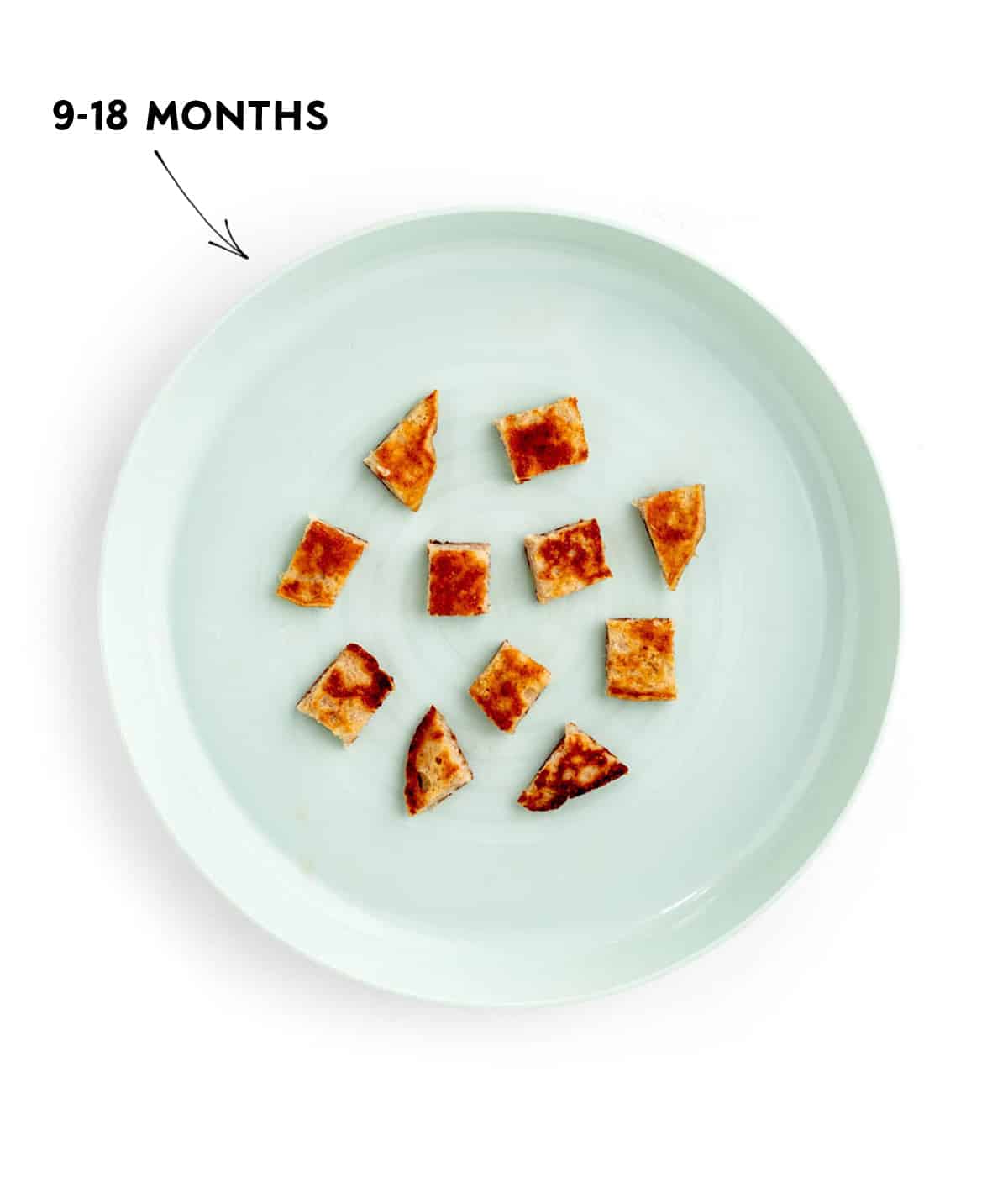
18+ months
Over time, your baby will become skilled at picking up their little pancake pieces and bringing them to their mouths.
After they turn 12 months or so, you can start offering your baby the entire pancake. It may seem counterintuitive to offer the largest size pancake first, but the goal is to teach them how to take individual bites.
Older babies tend to shove food into their mouths, but it’s safer and healthier for them to take smaller bites, chew, then swallow.
I find the best way to achieve this goal is to form the pancake batter into small pancakes (typically 2-3 inches in diameter) in the pan that are just the right size for your baby to hold in their hand.
You may need to model how to take bites to teach your little one the way. Over time, they’ll gradually start biting off small amounts and pick up this skill easily.
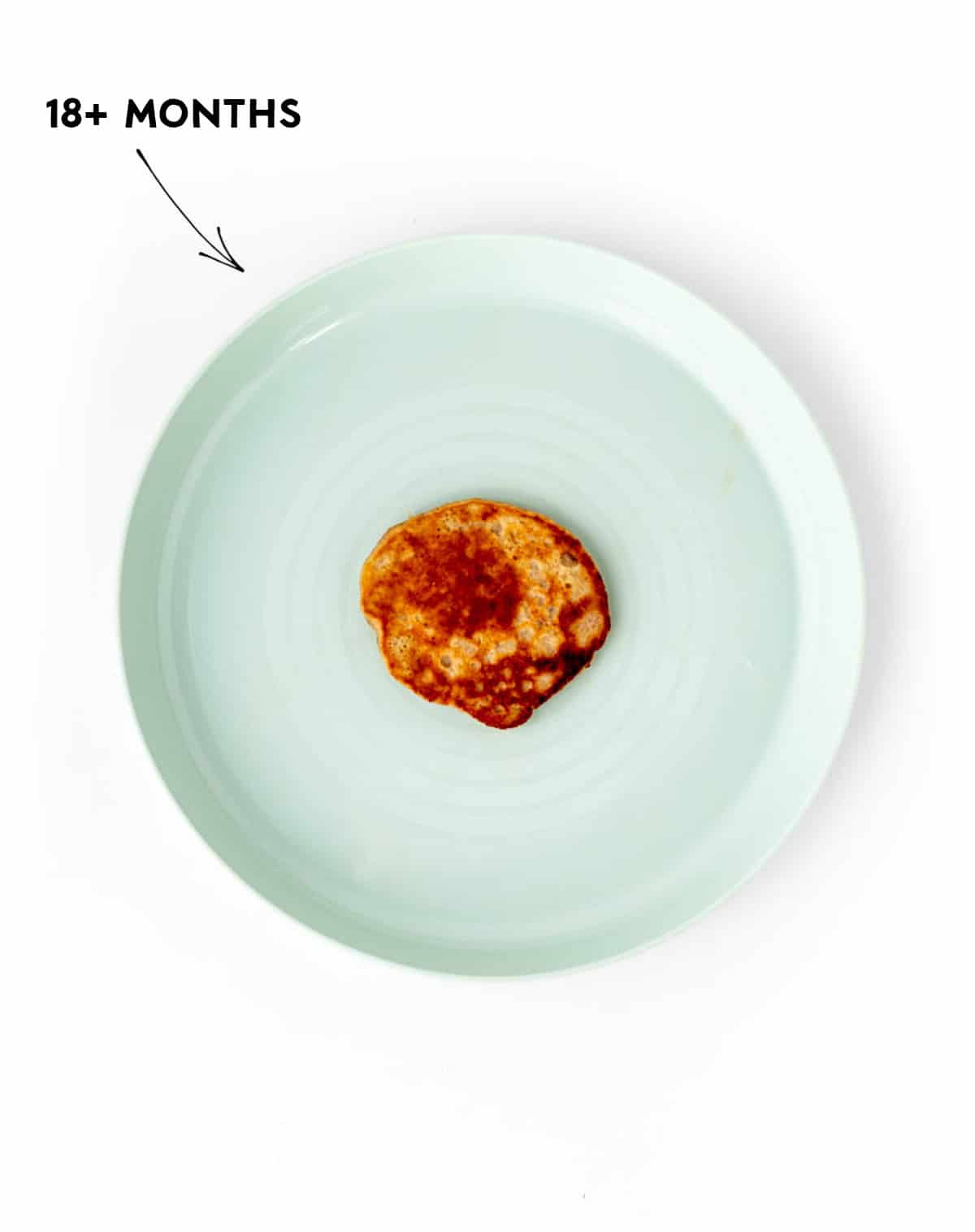
OTHER TIPS FOR SERVING BABY PANCAKES
- If you’d like to spruce up your pancakes even more, you can thinly spread some nut butter such as natural peanut butter or almond butter onto them before cutting the pancakes and serving them to baby. I also like to sprinkle on some hemp seeds or ground flax seeds as well for some additional fibre, protein and healthy fats.
- Pancakes can be an easy way to introduce new foods to babies, and the best part is, there are lots of different flavours to experiment with. Try pancakes made with sweet potato or pumpkin puree to switch up the flavours!
- You can also serve up pancakes with a dip such as yogurt (refer to this post on the best yogurt for babies), or applesauce (we love this unsweetened applesauce recipe)! As babies develop their skills, they can have fun dunking each pancake into the dip for added fun and flavour!
- Serve pancakes up with a source of vitamin C such as fresh berries, kiwi, oranges or mango to help enhance iron absorption from the pancakes!
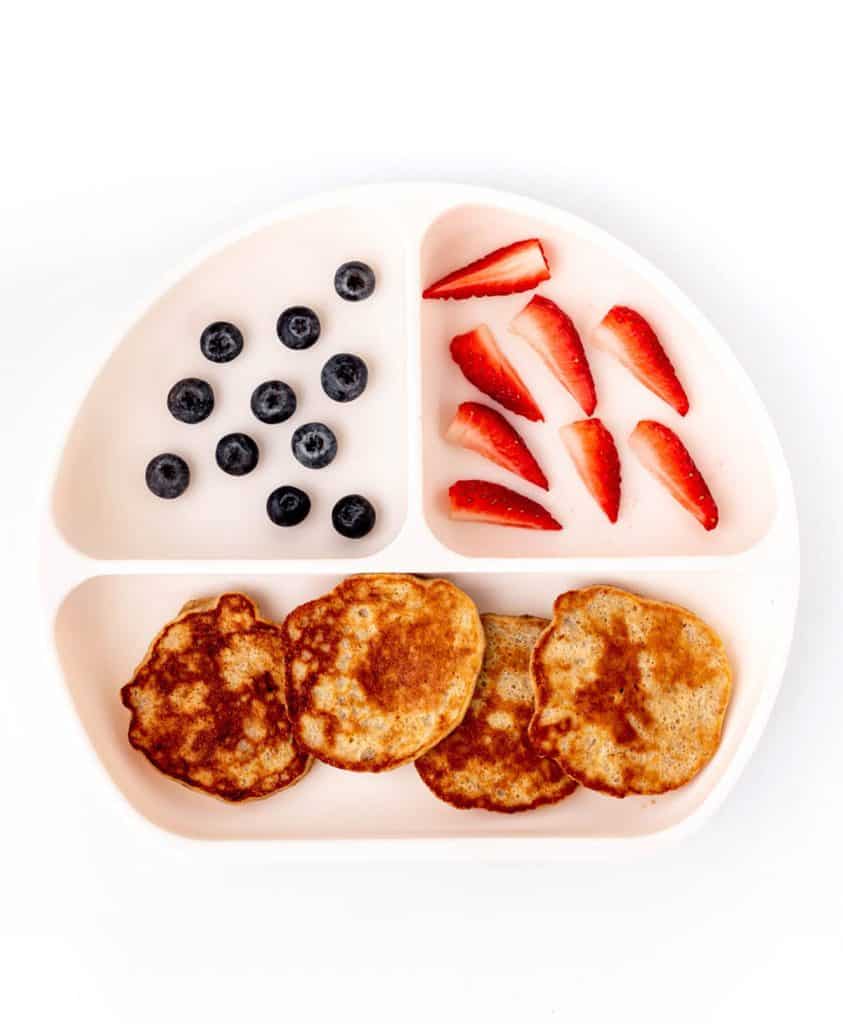
To Summarize
Refer to or pin the guide below to quickly reference how to cut pancakes for babies depending on their age and stage:
